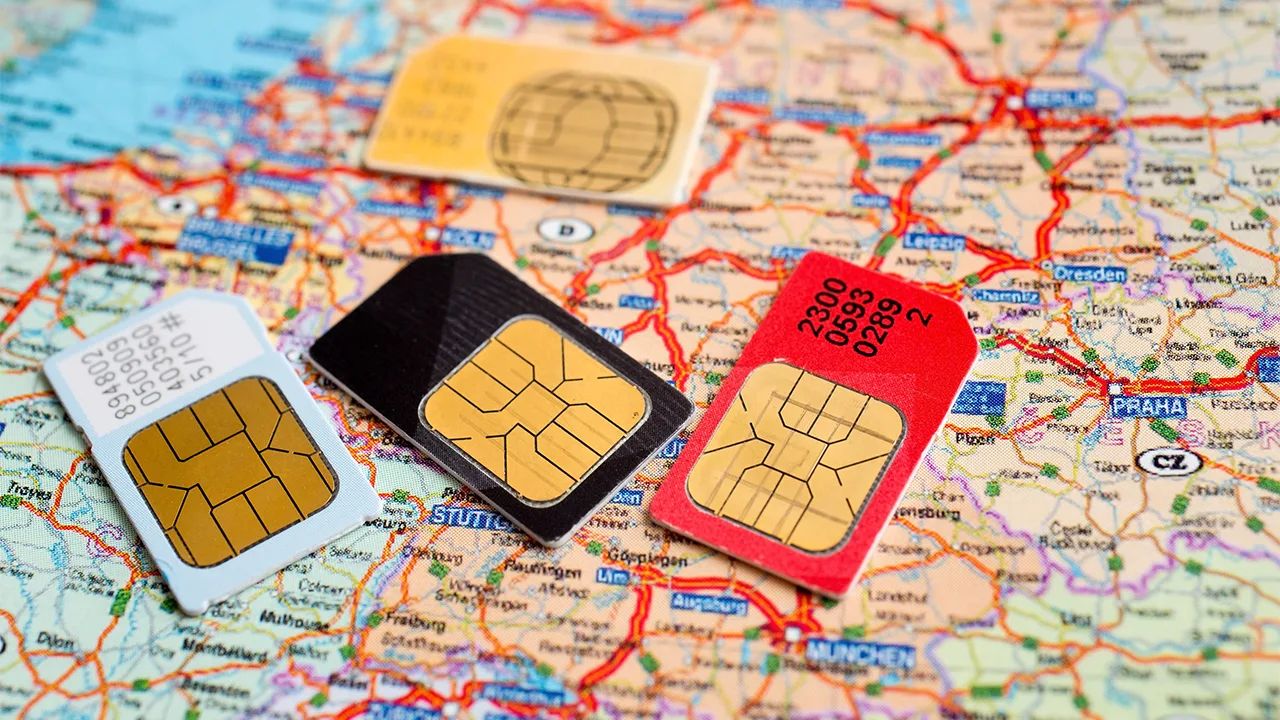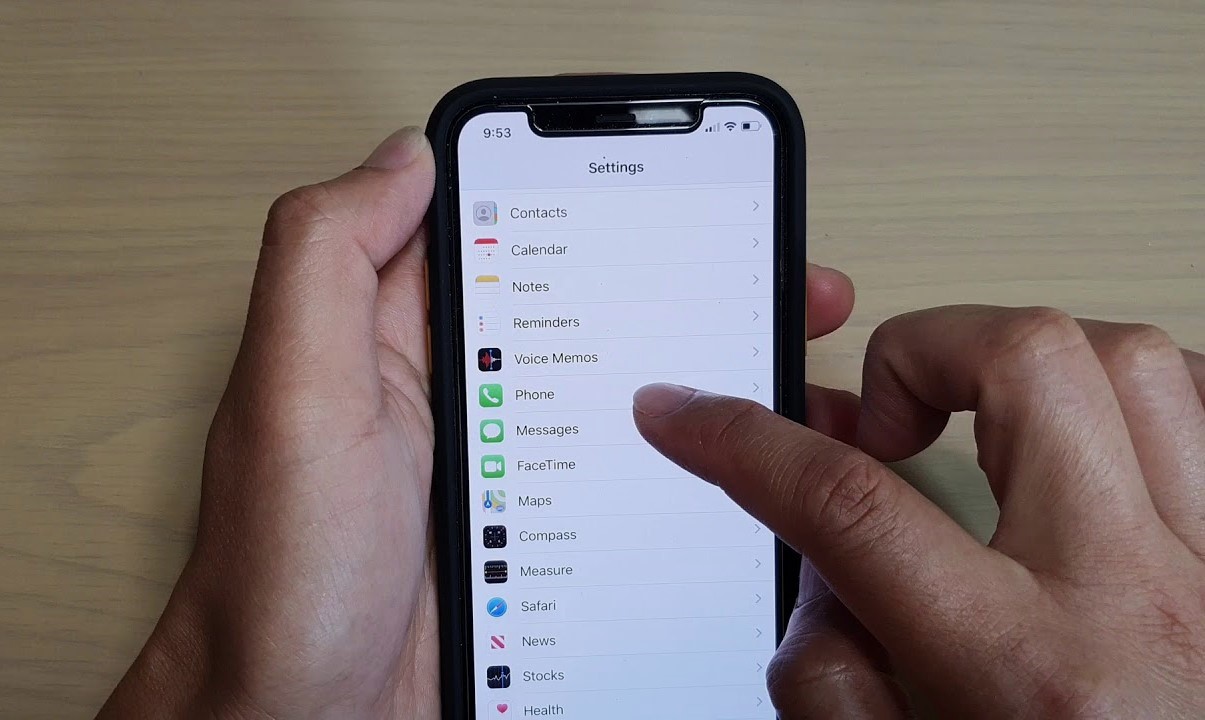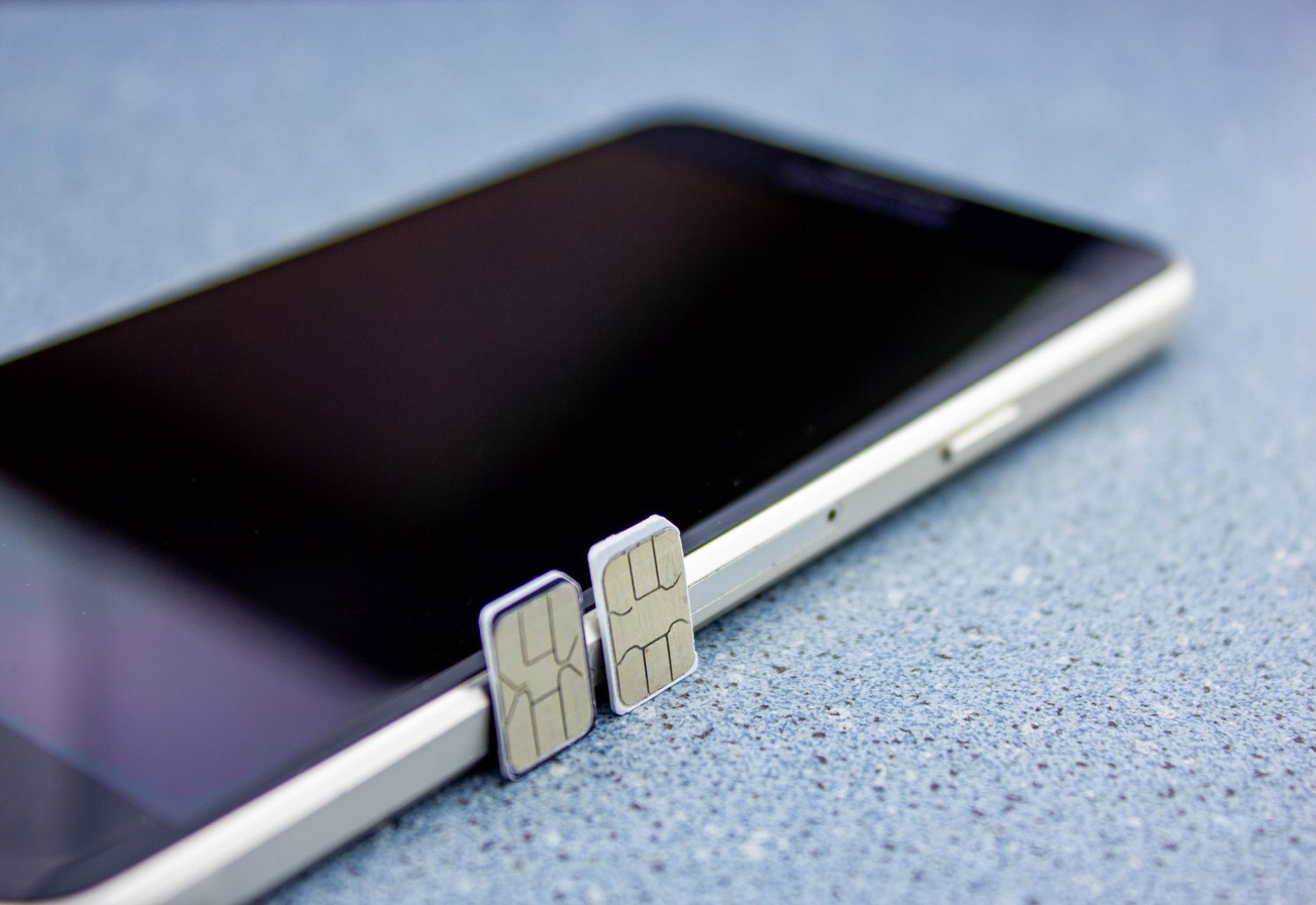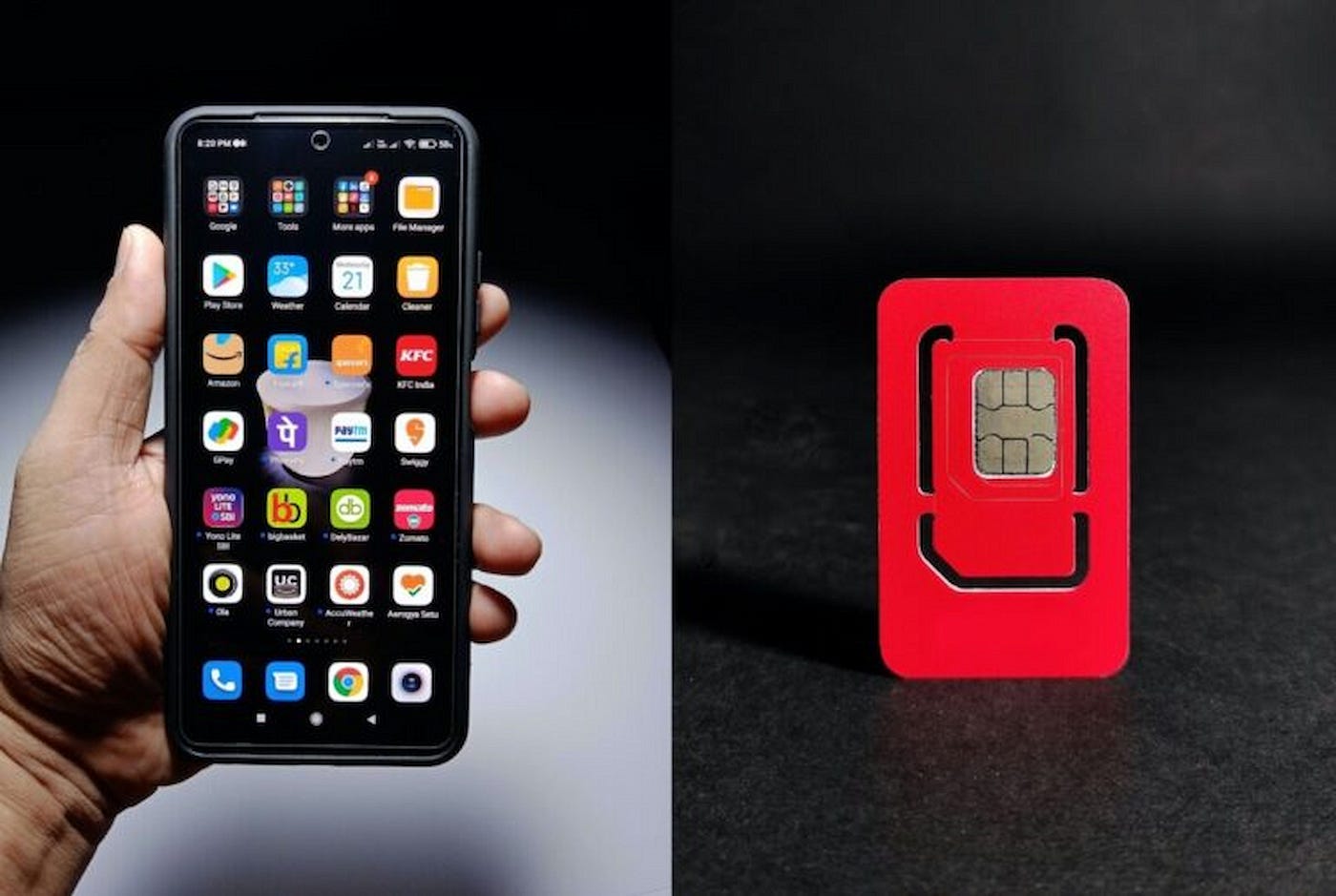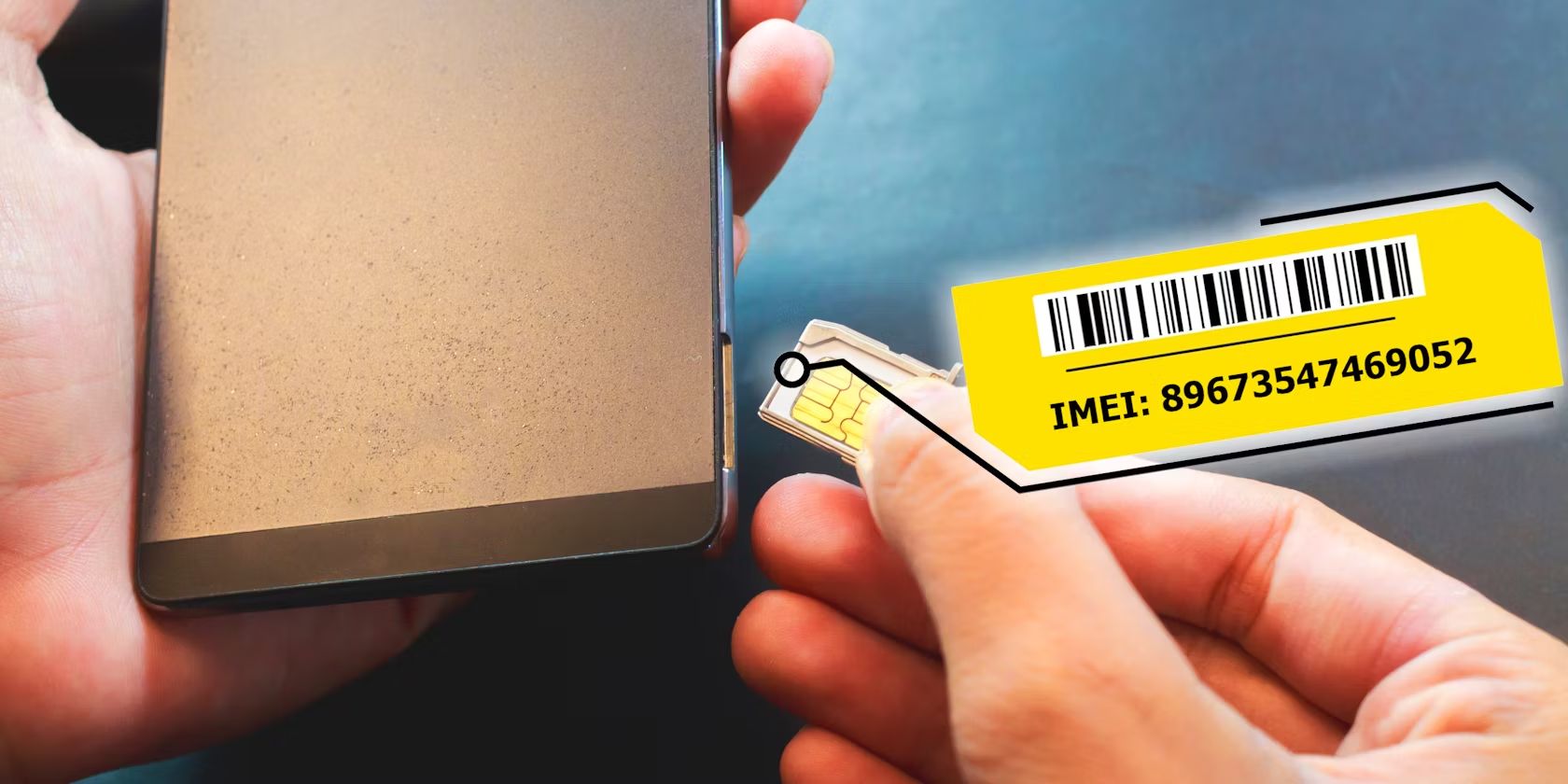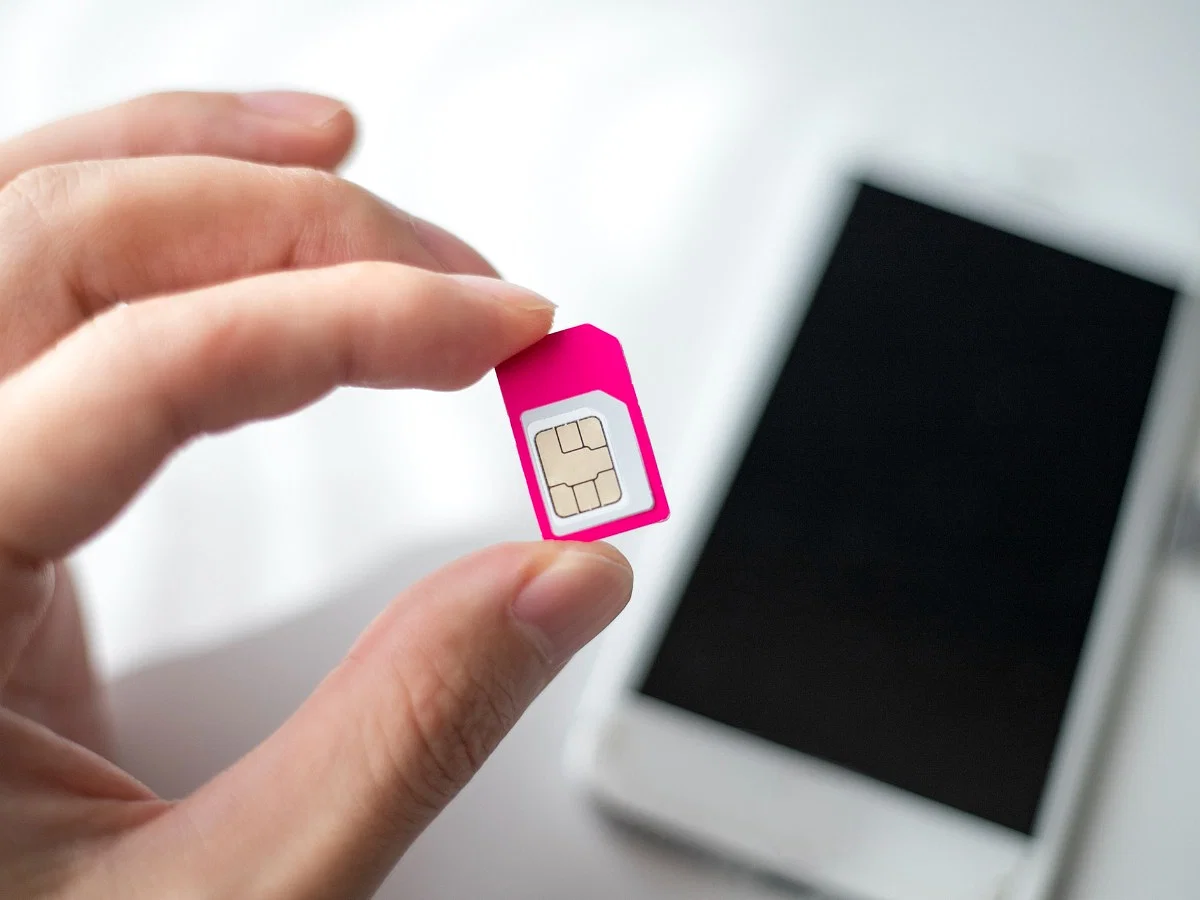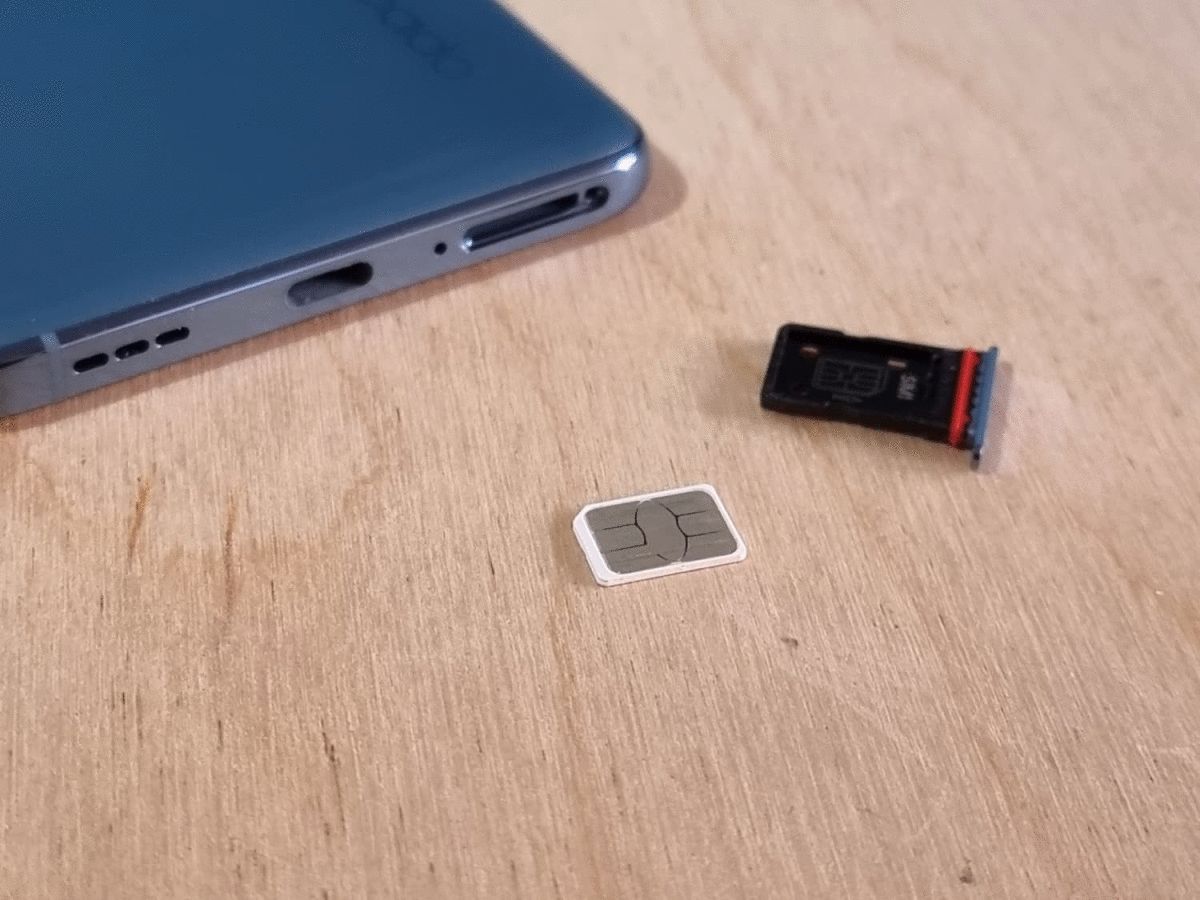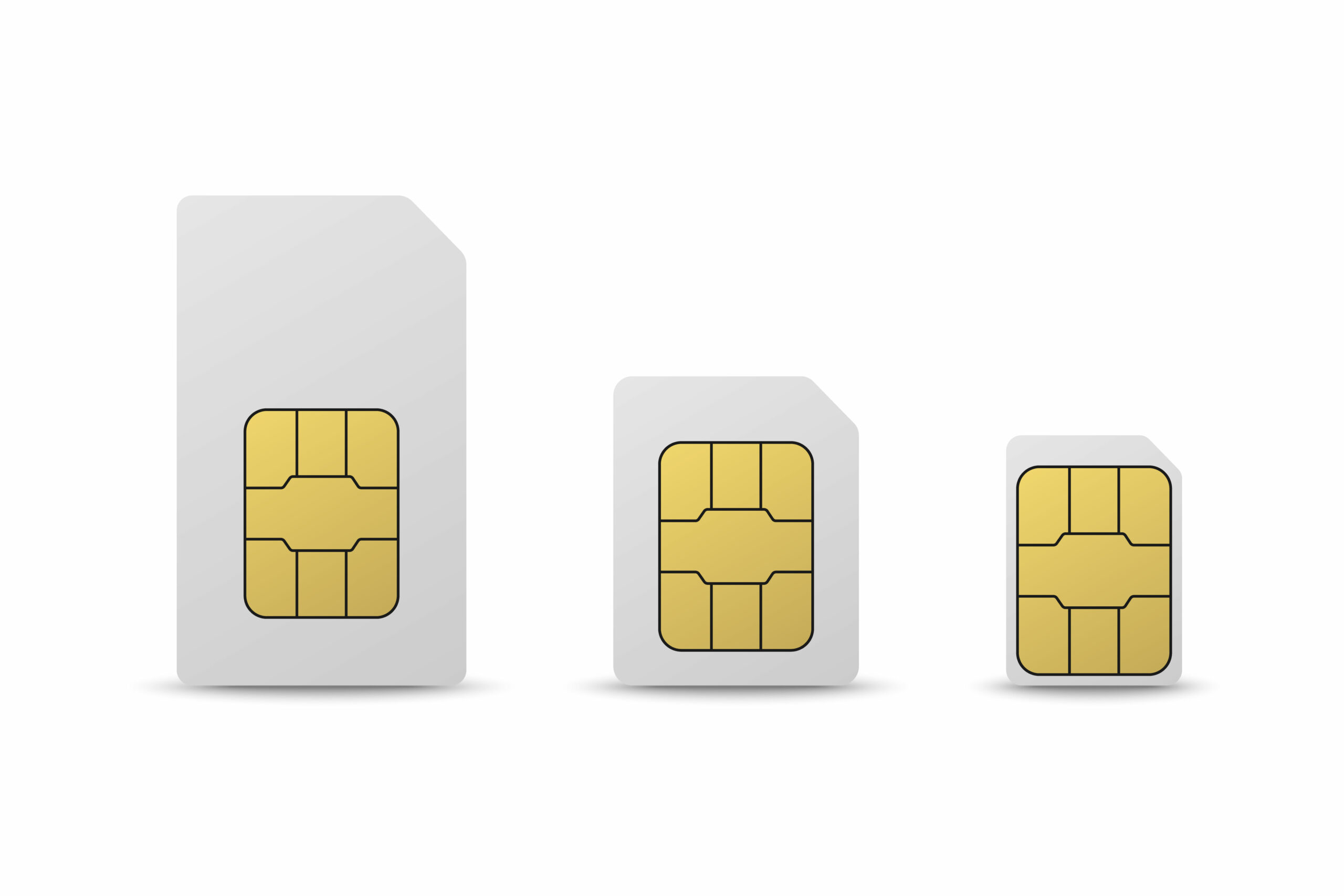Introduction
In today's fast-paced, interconnected world, mobile devices have become an indispensable part of our daily lives. Whether we're making calls, sending text messages, or browsing the internet, our smartphones and tablets rely on a small but mighty component known as the Subscriber Identity Module (SIM) card. While most of us are familiar with the physical appearance and basic function of SIM cards, there's a lesser-known aspect that plays a crucial role in the seamless operation of mobile devices: the numbering system.
The numbering on SIM cards comprises a series of unique identifiers that are fundamental to the functionality of mobile devices. These identifiers include the International Mobile Subscriber Identity (IMSI) number, the Integrated Circuit Card Identifier (ICCID) number, and the Mobile Station International Subscriber Directory Number (MSISDN). Understanding the significance of these numbers not only sheds light on the inner workings of our mobile devices but also provides insights into the intricate network of telecommunications.
In this article, we will delve into the intricacies of SIM card numbering, demystifying the purpose and significance of each identifier. By gaining a deeper understanding of the numbering system, we can appreciate the remarkable technology that enables us to stay connected, informed, and empowered in the digital age. So, let's embark on a journey to unravel the mysteries behind the numbers etched onto our SIM cards, unveiling the vital role they play in the seamless functioning of our beloved mobile devices.
What is a SIM Card?
A SIM card, short for Subscriber Identity Module, is a small, removable smart card that is inserted into mobile devices to enable them to connect to a cellular network. This tiny yet powerful component serves as a unique identifier for the user and the device, facilitating communication with the network operator. SIM cards are commonly used in smartphones, tablets, and other mobile devices, providing access to voice calls, text messaging, and data services.
The primary function of a SIM card is to authenticate the user and their device on the mobile network, allowing them to make and receive calls, send and receive text messages, and access mobile data services. Each SIM card is associated with a specific mobile number and contains essential information, such as the International Mobile Subscriber Identity (IMSI) number, the Integrated Circuit Card Identifier (ICCID) number, and the Mobile Station International Subscriber Directory Number (MSISDN).
SIM cards come in various sizes, including standard SIM, micro-SIM, and nano-SIM, to accommodate different types of mobile devices. The evolution of SIM card technology has led to the development of embedded SIM (eSIM) cards, which are integrated directly into devices and can be remotely activated and managed.
In addition to enabling communication services, SIM cards also play a crucial role in ensuring the security and privacy of mobile communications. They store encryption keys and authentication information, safeguarding the integrity of voice and data transmissions over the cellular network.
Furthermore, SIM cards allow users to seamlessly switch between devices while retaining their mobile number and service plan. This flexibility and portability make SIM cards an essential component of modern mobile communication, empowering users to stay connected wherever they go.
In essence, a SIM card serves as the gateway to the mobile network, providing users with the means to communicate, access information, and stay connected in today's digital world. Its compact size belies its significance, as it forms the foundation of mobile connectivity and empowers users to harness the full potential of their mobile devices.
This section provides a comprehensive overview of the fundamental role of SIM cards in enabling mobile communication and connectivity. By understanding the essential functions and capabilities of SIM cards, users can appreciate the seamless and secure communication services that have become an integral part of modern life.
The Importance of SIM Card Numbering
The numbering system embedded within SIM cards holds profound significance in the realm of mobile communication and network operations. These unique identifiers, including the International Mobile Subscriber Identity (IMSI) number, the Integrated Circuit Card Identifier (ICCID) number, and the Mobile Station International Subscriber Directory Number (MSISDN), serve as the backbone of seamless connectivity and personalized mobile services.
The IMSI number, a critical component of SIM card numbering, functions as a unique identifier for each subscriber within the mobile network. It plays a pivotal role in authenticating users and enabling access to network services. By associating specific users with their respective IMSI numbers, mobile operators can efficiently manage subscriber information, tailor service offerings, and ensure secure and personalized communication experiences.
Similarly, the ICCID number, a distinct serial number assigned to each SIM card, serves as a vital identifier for network operators and device manufacturers. This alphanumeric code enables precise tracking and management of SIM cards, facilitating activation, deactivation, and diagnostics. The ICCID number also plays a crucial role in ensuring the integrity and security of SIM card operations, allowing for seamless integration with mobile devices and network infrastructure.
Furthermore, the MSISDN, commonly known as the mobile phone number, forms an integral part of SIM card numbering. This unique number enables users to receive calls, send text messages, and access mobile services, serving as a direct point of contact within the mobile network. The MSISDN, in conjunction with the IMSI and ICCID numbers, forms a cohesive framework that underpins the delivery of personalized and reliable mobile communication services to users worldwide.
The significance of SIM card numbering extends beyond mere identification, as it encompasses the seamless provisioning of mobile services, secure authentication, and efficient network management. By understanding the intricate web of numbering systems within SIM cards, users can gain insights into the robust infrastructure that powers their mobile devices, ensuring consistent connectivity and personalized experiences.
In essence, the importance of SIM card numbering lies in its ability to facilitate secure and personalized mobile communication, enabling users to stay connected, informed, and empowered. This section illuminates the underlying significance of SIM card numbering, shedding light on its pivotal role in shaping the modern landscape of mobile connectivity and communication.
Understanding the IMSI Number
The International Mobile Subscriber Identity (IMSI) number serves as a fundamental pillar of the SIM card numbering system, playing a pivotal role in the authentication and identification of mobile subscribers within cellular networks. Comprising a unique numerical code, the IMSI serves as a digital fingerprint that distinguishes each subscriber, enabling seamless access to network services and personalized communication experiences.
At its core, the IMSI number consists of three primary components. The first segment is the Mobile Country Code (MCC), which denotes the country in which the SIM card is registered. This three-digit code provides a standardized representation of the subscriber's home country, allowing for international recognition and interoperability across diverse mobile networks.
The second component of the IMSI is the Mobile Network Code (MNC), a two or three-digit identifier that specifies the mobile network operator within the designated country. This segment enables precise localization and differentiation of network operators, ensuring seamless connectivity and service provisioning for subscribers across various cellular networks.
The final element of the IMSI is the Mobile Subscriber Identification Number (MSIN), which constitutes the unique subscriber identification within the designated mobile network. This segment, typically comprising 10 digits, serves as the individual identifier for the subscriber, enabling targeted communication services and personalized network interactions.
The IMSI number plays a crucial role in the authentication and registration of mobile subscribers within cellular networks. When a mobile device attempts to connect to a network, the IMSI is transmitted to the network operator, enabling the identification and validation of the subscriber's credentials. This process is essential for granting access to network services, including voice calls, text messaging, and data connectivity, while ensuring the security and integrity of mobile communications.
Moreover, the IMSI number forms the cornerstone of personalized mobile services, allowing network operators to tailor offerings based on subscriber preferences, roaming agreements, and service entitlements. By leveraging the IMSI, mobile operators can deliver targeted services and seamless connectivity experiences, enriching the mobile communication landscape for subscribers worldwide.
In essence, the IMSI number serves as a vital identifier that underpins the seamless operation of mobile networks, enabling secure authentication, personalized services, and global connectivity. Its role in distinguishing subscribers, facilitating network access, and enabling tailored communication experiences highlights its significance in shaping the modern era of mobile communication.
Understanding the ICCID Number
The Integrated Circuit Card Identifier (ICCID) number is a unique serial number assigned to each SIM card, serving as a vital component of the SIM card numbering system. Comprising a 19 to 20-digit alphanumeric code, the ICCID plays a crucial role in identifying and managing SIM cards within the mobile network ecosystem.
At its essence, the ICCID number serves as a distinct identifier for SIM cards, enabling precise tracking, management, and authentication. This alphanumeric code is structured in a specific format, with the initial part representing the Issuer Identification Number (IIN), which identifies the SIM card issuer or manufacturer. The subsequent segments include the individual account identification and a check digit, ensuring the accuracy and integrity of the ICCID.
The ICCID number plays a pivotal role in facilitating the activation, provisioning, and management of SIM cards within the mobile network. When a SIM card is inserted into a mobile device and connected to a network, the ICCID is transmitted to the network operator, enabling seamless registration and authentication. This process is essential for enabling the SIM card to access network services, including voice calls, text messaging, and mobile data connectivity.
Furthermore, the ICCID number enables efficient tracking and management of SIM cards throughout their lifecycle. Network operators utilize the ICCID to monitor SIM card activations, deactivations, and changes in status, ensuring the seamless integration of SIM cards into the network infrastructure. This level of precision and control enhances the operational efficiency of mobile operators, enabling them to deliver reliable and secure communication services to subscribers.
In addition to its role in SIM card management, the ICCID number is integral to ensuring the security and integrity of mobile communications. By uniquely identifying each SIM card, the ICCID enables network operators to safeguard against unauthorized usage, fraudulent activities, and unauthorized access to network resources. This level of security is essential for maintaining the trust and privacy of mobile subscribers, fostering a secure and reliable communication environment.
In summary, the ICCID number serves as a foundational element in the SIM card numbering system, enabling precise identification, management, and security of SIM cards within the mobile network. Its role in facilitating activation, authentication, and security underscores its significance in shaping the seamless and reliable mobile communication experiences that users depend on daily.
Understanding the MSISDN Number
The Mobile Station International Subscriber Directory Number (MSISDN) holds a pivotal role in the realm of mobile communication, serving as a unique identifier that enables direct communication with mobile devices. At its core, the MSISDN number represents the mobile phone number assigned to a specific subscriber, allowing for seamless voice calls, text messaging, and access to mobile services.
The structure of the MSISDN number is standardized to enable global interoperability and recognition across diverse mobile networks. It typically comprises a country code, an area code or network code, and the subscriber's individual phone number. This hierarchical arrangement ensures that each MSISDN is globally unique, facilitating accurate routing and connectivity for mobile communications.
The country code, denoted by the International Telecommunication Union (ITU) standard E.164, serves as the initial segment of the MSISDN, representing the subscriber's home country. This standardized representation allows for international recognition and seamless communication across borders, ensuring that mobile subscribers can be reached regardless of their geographic location.
Following the country code, the area code or network code specifies the mobile network operator to which the subscriber is affiliated. This segment enables precise routing and connectivity, ensuring that calls and messages are directed to the appropriate network for seamless delivery to the intended recipient.
The final component of the MSISDN is the subscriber's individual phone number, which uniquely identifies the user within the designated mobile network. This segment allows for direct communication with the subscriber, enabling voice calls, text messaging, and other mobile services to be seamlessly delivered to the intended recipient.
The MSISDN number plays a crucial role in enabling direct communication with mobile subscribers, forming the foundation of voice-based and text-based interactions within the mobile network. When a call or message is initiated, the MSISDN serves as the key identifier for routing and delivering communication services to the intended recipient, ensuring that users can stay connected and engaged in real-time communication experiences.
Moreover, the MSISDN number facilitates seamless roaming and international communication, allowing mobile subscribers to maintain their unique phone numbers while traveling across different countries and utilizing diverse mobile networks. This level of portability and global recognition enhances the accessibility and reach of mobile communication, empowering users to stay connected and accessible regardless of their location.
In essence, the MSISDN number serves as a vital identifier that enables direct communication with mobile subscribers, fostering seamless voice calls, text messaging, and mobile service accessibility. Its standardized structure, global uniqueness, and role in enabling cross-border communication underscore its significance in shaping the modern landscape of mobile connectivity and personalized communication experiences.
Conclusion
In conclusion, the numbering system embedded within SIM cards plays a pivotal role in shaping the landscape of mobile communication, network operations, and personalized connectivity experiences. By unraveling the intricacies of the International Mobile Subscriber Identity (IMSI) number, the Integrated Circuit Card Identifier (ICCID) number, and the Mobile Station International Subscriber Directory Number (MSISDN), we gain profound insights into the underlying infrastructure that powers our mobile devices.
The IMSI number serves as a digital fingerprint that distinguishes each subscriber within cellular networks, enabling seamless access to network services, personalized communication experiences, and secure authentication. Its role in shaping the personalized mobile services and facilitating global connectivity highlights its significance in the realm of mobile communication.
Similarly, the ICCID number, as a unique identifier for SIM cards, enables precise tracking, management, and authentication within the mobile network ecosystem. Its role in facilitating activation, provisioning, and security underscores its significance in ensuring the seamless and reliable operation of mobile communication services.
Furthermore, the MSISDN number, as the unique identifier representing the mobile phone number, enables direct communication with mobile subscribers, fostering seamless voice calls, text messaging, and global recognition. Its role in enabling cross-border communication, portability, and global reach underscores its significance in shaping the accessibility and reach of mobile communication experiences.
By understanding the intricacies of SIM card numbering, users can gain a deeper appreciation for the robust infrastructure that underpins their mobile devices, ensuring consistent connectivity, secure authentication, and personalized communication services. The seamless integration of SIM card numbering into the mobile network ecosystem empowers users to stay connected, informed, and engaged in the digital era.
In essence, the numbering on SIM cards transcends mere identification, embodying the seamless provisioning of mobile services, secure authentication, and efficient network management. By shedding light on the vital role of SIM card numbering, we unveil the remarkable technology that enables us to stay connected, informed, and empowered in the digital age.







